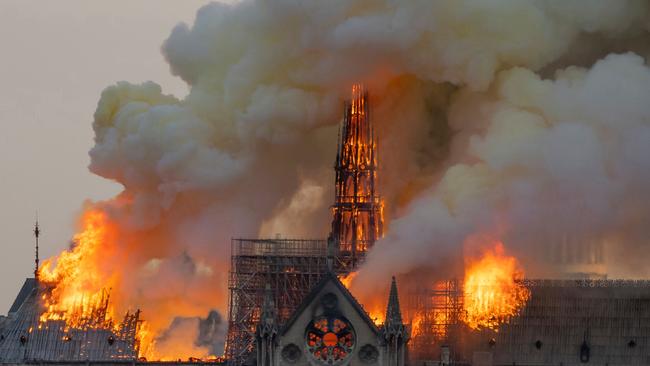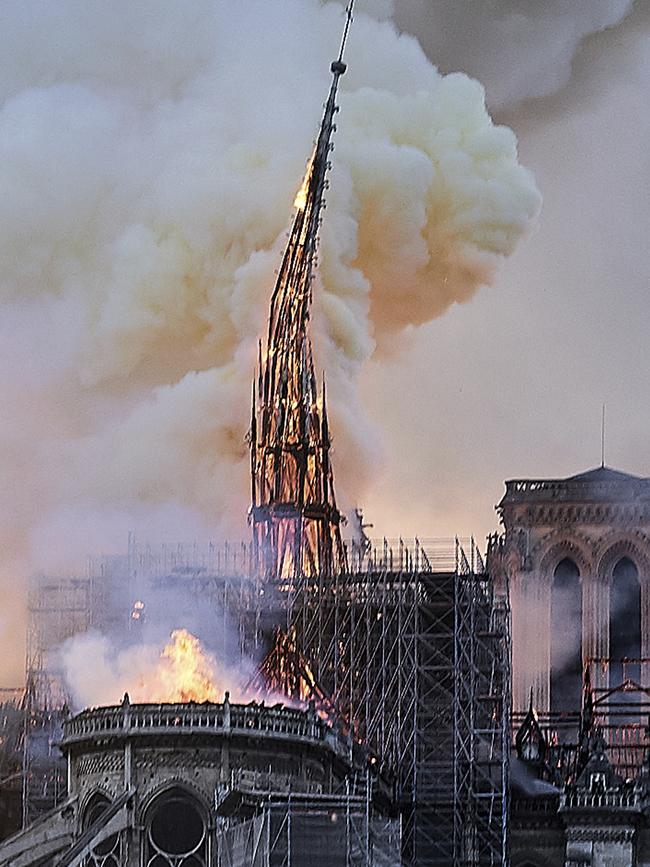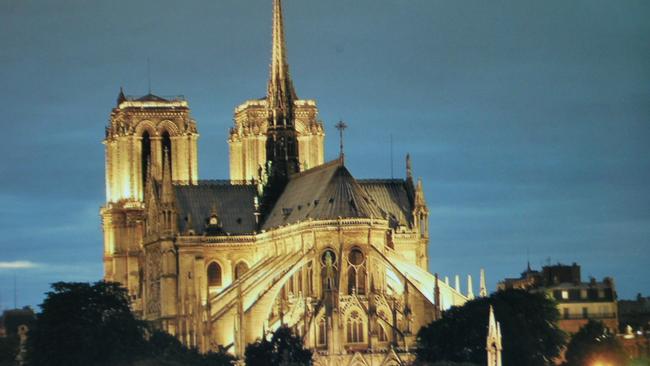State’s decades of neglect blamed for Notre Dame’s destruction
Decades of neglect helped turn the cathedral into a rotting ruin behind its iconic facade.

Lovers of Notre Dame deplored the politics and bureaucracy that have held up the much-needed restoration of the most visited monument in Europe.
“The means were not provided to maintain it,” said Marie-Claude Gauvard, a medieval historian and author of a book on the great Gothic cathedral. “The renovation work was finally started and it was high time, and perhaps a bit late,” she added.
MORE: Notre Dame engulfed in flames
MORE: Why this cathedral means so much
As property of the state, like all French churches since 1905, the cathedral has been deprived of more than minimum government funding to cope with crumbling stone, a collapsing roof and rotting gargoyles. Funds for repairs have been arriving belatedly, thanks to a campaign over the past year by the Catholic Church to raise €150 million from sponsors in the US and elsewhere.
Work was held up because renovation came under the orders of too many institutions, including the French state, Paris city council, the ministry of historic monuments and the Catholic archdiocese of Paris, said Ms Gauvard.
Hoy un pedazo de historia desapareció. Notre Dame, Paris pic.twitter.com/Kgum8q5kPe
— April (@abrilsagasti1) April 15, 2019
Stephane Bern, a television presenter who was appointed by President Macron to raise funds for historic monuments, said today that he felt anger. “Notre Dame is part of our history and of the French nation. For me, a close friend is leaving us,” he said. The collapsing spire was “symptomatic of what we are living through - a society in which everything goes up in flames.”


He was bitter because Mr Macron last year blocked his demands to charge an entrance fee for visitors to the cathedral as the best way of financing repairs. to the ravages inflicted by the 14 million people who go there each year.
Most other great churches in Europe, from Westminster Abbey to the monuments of Venice, charge entrance fees and sometimes quite high ones, said Mr Bern. Mr Macron said there could be no question of charging people to visit public monuments, especially when he was trying to make museums free. “In 1905 there were millions of worshippers and a few thousand visitors at Notre Dame de Paris,” Mr Bern said recently. “Today there are 14 million tourists and a few thousand worshippers. How can you maintain the place in these conditions?” To keep the tourist monument operating, the cathedral employs 67 full-time staff. Electricity costs €800 daily, heating costs €1,000.

The state is paying no more than €40 million in the next decade because its coffers are low and because of fears of infringing secular values. Leftwing politicians have campaigned against spending on religious property at a time of spending cuts and the commitment to le laicite, the strict secularism that bars religion from public life.
Businesses shared politicians’ reticence to offer sponsorship. “They are very afraid of being accused of financing a religion and of contravening secularism,” said Andre Finot, the cathedral’s communications director. Recently he likened the crumbling cathedral to the empty facades maintained by Soviet Russia to impress foreigners and its own people. “It’s a bit like a Soviet decor - a restored facade with a ruin behind it,” he said.

No major restoration had been carried out since Eugene Viollet-le-Duc’s work in the mid-19th century. Behind the public areas lay desolation, said a report by the le Point news magazine last year. Wooden planks had been installed to cover holes in the roof. PVC tubing was sticking out from gutters from which gargoyles had fallen. “The old cathedral is falling into ruin,” it said. “Everywhere the stone is literally melting under attack from pollution. Your finger sticks into it like a lump of butter.”
The state defended itself last year, playing down the risks. “The cathedral is not going to collapse at all,” said Marie-Helene Didier, the official at the historic monuments department in charge of the renovation. “She is an old lady which has been undergoing the wear of time. We intervene before the disorder creates greater risks,” she said.
The Times


